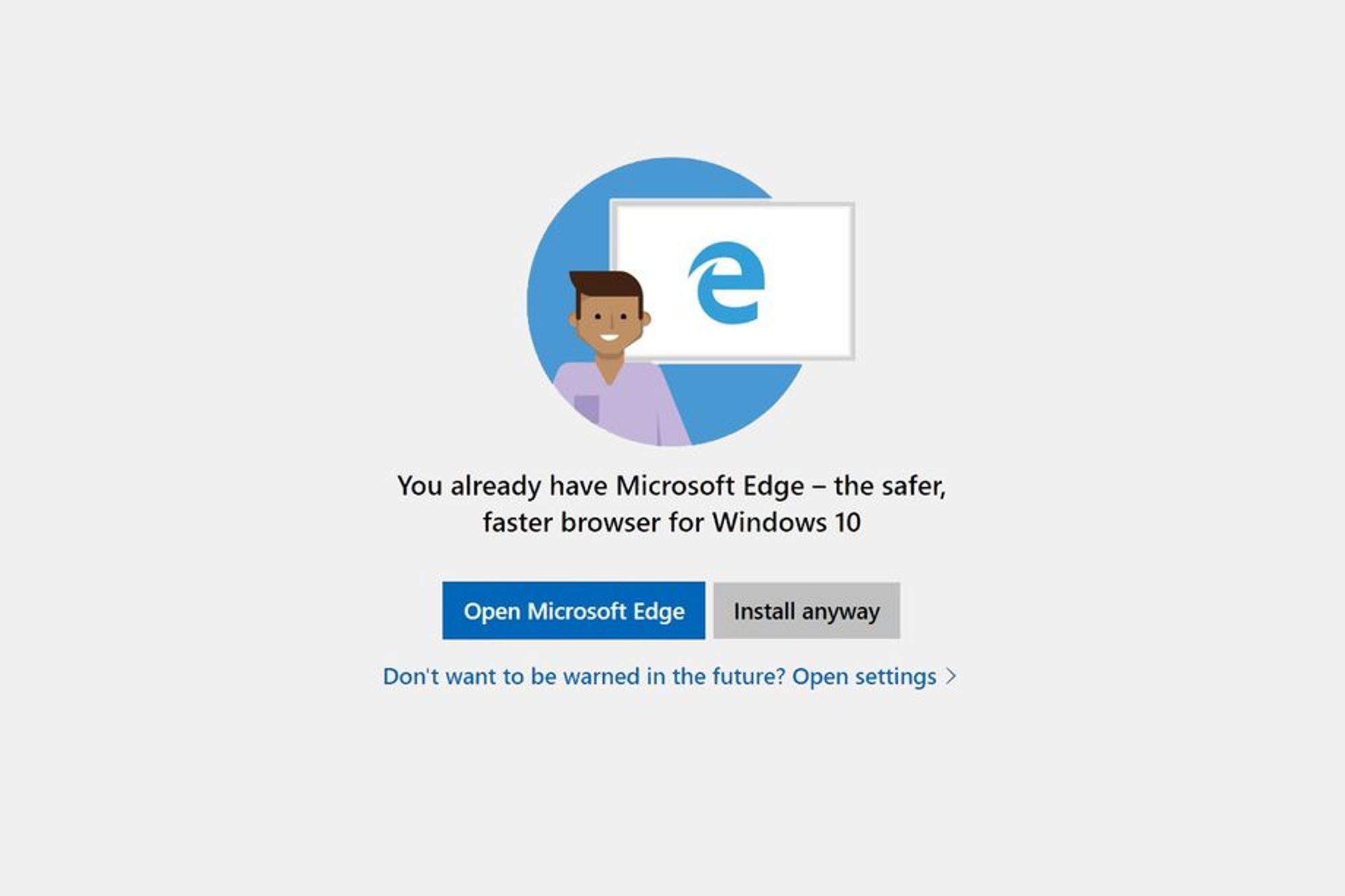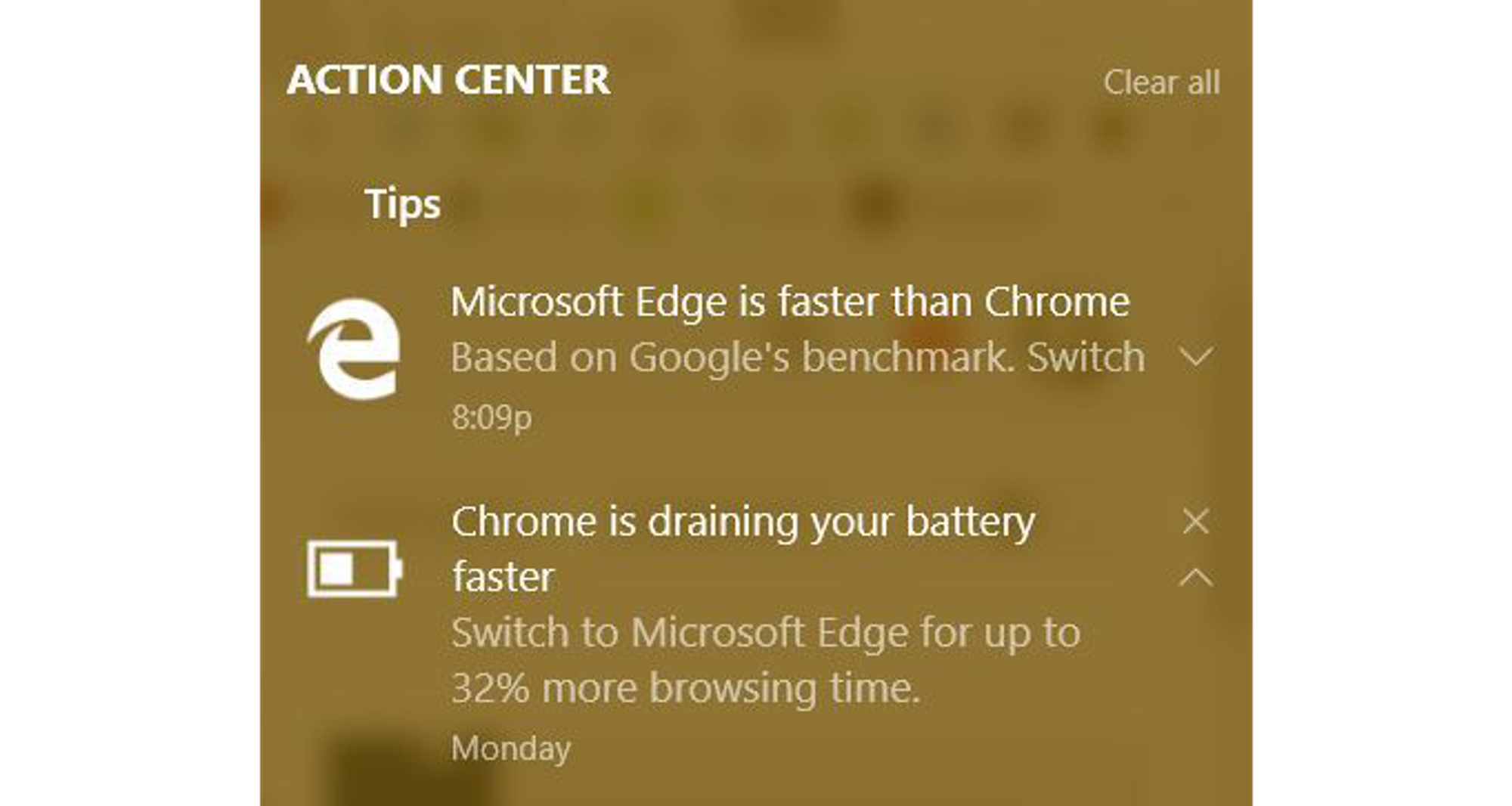
Today, some users using a preview version of Windows noticed something strange when they tried to install Chrome or Firefox. Windows would hijack their installer with a warning, proclaiming, “you already have Microsoft Edge – the safer, faster browser for Windows 10.”

Windows is perplexed and clearly annoyed. Sure, if you must, you can bypass the warning and install Chrome, but why won’t you just use the safer, faster browser?
This is bizarre to be sure, but this isn’t the first time Microsoft has tried — aggressively — to get users to use Edge. Currently, users running Chrome get notifications about the woes of Chrome (it hurts battery life) and wonders of Edge (it’s built for Windows 10, whatever that means).

So all this begs the question, why does it matter what browser people use? Why is Microsoft forcing Edge on everyone?
Microsoft, the Services Company
In the past, Windows and Office were cash cows and they basically ruled the company.
Nowadays, not so much. Microsoft wanted everyone on Windows 10 so much that they gave it away for free, then extended the free period because people were still using Windows 7, then extended it again. As for Office, it’s all subscription-based now, and unless you work in a company that buys into the Microsoft ecosystem, you’re probably not using Office, you use Google Docs instead. So Microsoft just wants to get everyone to use their services.
How is this related to Edge? According to Microsofters (Microsofties?) I talked to, the company’s internal metrics show that people who use Edge use more Microsoft services (OneDrive, Office, Outlook, etc). This means that to get more people on Office 365, Microsoft has to get them to browse the web with Edge.
Correlation and Causation
In statistics, people throw around the phrase “correlation does not imply causation” a lot and it’s very useful. For example, ice cream sales and the rate of drowning deaths seem to have a direct relationship. As ice cream sales go up, more people drown. This would imply that ice cream causes people to drown, but obviously, that’s not the case. But for other contexts, say, an increase in Edge usage and more adoption of Microsoft services, that can be harder to ascertain.
I haven’t seen Microsoft’s internal metrics, so this next part is pure speculation.
Does Edge really increase adoption of Microsoft services? I struggle to see the direct line between someone using Edge and someone buying an Office subscription.
My suspicion is that there is no direct causation — one does not cause the other. Rather, people who use Edge are less-savvy users who stick to the defaults and services recommended to them (in this case, Microsoft services). This means that these people aren’t using these services because of Edge, but because they use whatever Windows tells them to use.
So, does repeatedly pestering Chrome and Firefox users to switch to Edge result in more Office subscriptions? Probably not. These users are more savvy and make their own decisions on which services to use, so blindly pushing Edge on users is most likely not productive. Probably unproductive.